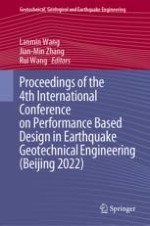The 4th International Conference on Performance-based Design in Earthquake Geotechnical Engineering (PBD-IV) is held in Beijing, China. The PBD-IV Conference is organized under the auspices of the International Society of Soil Mechanics and Geotechnical Engineering - Technical Committee TC203 on Earthquake Geotechnical Engineering and Associated Problems (ISSMGE-TC203). The PBD-I, PBD-II, and PBD-III events in Japan (2009), Italy (2012), and Canada (2017) respectively, were highly successful events for the international earthquake geotechnical engineering community. The PBD events have been excellent companions to the International Conference on Earthquake Geotechnical Engineering (ICEGE) series that TC203 has held in Japan (1995), Portugal (1999), USA (2004), Greece (2007), Chile (2011), New Zealand (2015), and Italy (2019). The goal of PBD-IV is to provide an open forum for delegates to interact with their international colleagues and advance performance-based design research and practices for earthquake geotechnical engineering.
